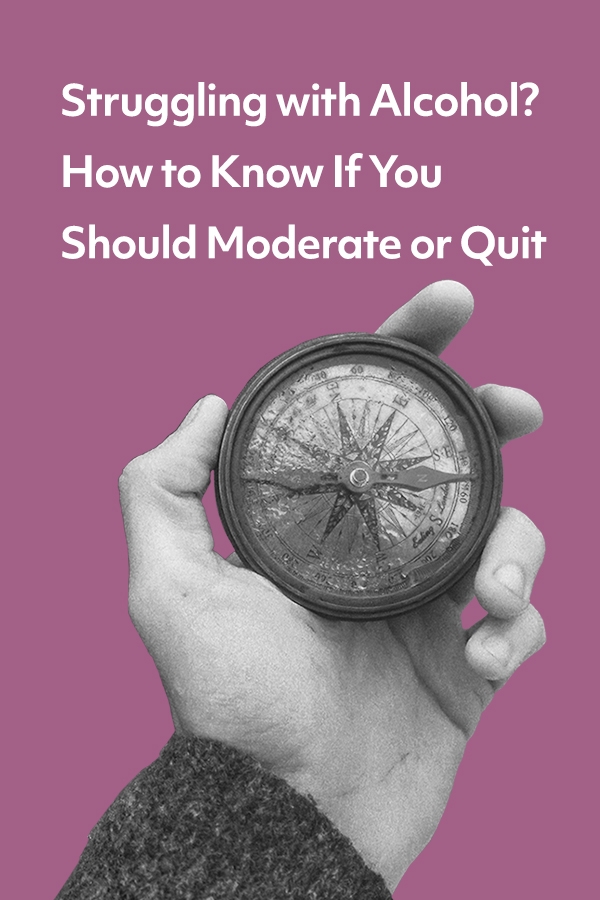Worried about your alcohol consumption? Simple tips on how to moderate or quit drinking.
While national attention has been brought to the recent epidemic of opioid use disorder and related overdose deaths, alcohol remains one of the leading causes of death in America. In fact, 6.8 percent of Americans age 18+ are dealing with alcoholism, or as it is now medically referred to, alcohol use disorder (AUD).
What are the dangers of alcohol?
Alcohol can cause a whole host of physical and behavioral problems. Probably the most well-known alcohol-associated risk is that of drunk driving. In 2016, over 10,000 people died from alcohol-related car crashes – that’s 28 percent of all traffic accidents. In addition to being deadly, driving under the influence of alcohol can lead to serious legal repercussions such as a DUI or OWI. In Michigan, being caught with a BAC (blood alcohol content) between 0.08 and 0.17 can mean up to a $500 fine, 93 days in jail and a 6 month license suspension on your first offense. A BAC over 0.17 can mean even more repercussions.
Drinking alcohol can also impair sense of judgement and increase aggression, which can lead to violence. Alcohol use has been shown to correlate with a number of violent crimes including robbery, sexual assault, and domestic violence. Approximately 70 percent of alcohol-related violence occurs at home, which can have a devastating impact on families.
Finally, chronic drinking can take its toll on the body. Over time, alcohol can damage the heart, pancreas and liver. Alcohol can even increase risk for certain cancers!
Moderation or abstinence?
For many people with alcohol use order, changing their relationship with alcohol can take two paths: moderation or abstinence. Depending on your specific circumstances, one path may be better than the other. Some people simply cannot do moderation, so abstinence is their only option for a healthy relationship with alcohol. Considering your history with drinking and other factors, such as your physical and mental health, with a health provider will help you decide which path is right for you. For instance, if you have alcoholic fatty liver disease, your provider will likely stress abstinence as any alcohol consumption will only make the condition worse.
Your doctor may give you a test such as the World Health Organization’s Alcohol Use Disorder Identification Test (AUDIT) to assess the severity of your addiction which can help further guide your choice. The AUDIT and similar tests are a series of questions about your relationship with alcohol and can be either self-administered or done interview-style.
Strategies for alcohol moderation
Before you start thinking about ways to reduce your alcohol intake, let’s define what a moderate or low-risk drinker actually is. After all, you need to understand what moderation means if you want it be your goal! Shimmy over to the National Institute on Alcohol Abuse and Alcoholism to learn more about who qualifies as a moderate (or heavy, or binge) drinker. Note that there are separate definitions for men and women.
Workit Health’s online addiction courses offer many great tips for moderating how much alcohol you consume. Two of my favorite strategies are “Cash only!” and “Switch your drink of choice.” In the first, we recommend leaving credit/debit cards at home and only carrying the amount of cash you need for your trip out. This will prevent you from buying booze on impulse when cravings hit. In the second, we recommend switching your preferred drinks to those with a lower alcohol content. If you’re a wine lover, give spritzers are try. Mocktails are also a delicious, fun option, and guess what? You can have as many as you want!
Once you find a strategy or strategies that work for you, keep at it until you reduce your drinking to moderate or low-risk levels. Your body, mind and relationships will thank you!
Going sober, for good
Quitting alcohol altogether can be a daunting task if you’ve been a regular drinker. Many people experience doubt about the benefits of quitting or their ability to do so. Plus, what about withdrawal?
Addiction to alcohol is tough, but you are tougher. The first step is seeking help. Here at Workit, we offer a comprehensive treatment plan for alcohol use disorder online so you can get your life back on track.
Let’s talk about two of the most daunting, but also most treatable, obstacles to going sober: withdrawal and cravings.
Alcohol withdrawal 101
There is no gentle way to put this: alcohol withdrawal can be deadly. However, with proper medical management you will come out on top. Not everyone who has alcohol use disorder will experience what we call complicated withdrawal, in fact most people won’t. Your healthcare provider will be able to assess whether you are at risk for withdrawal and take the proper next steps.
The standard treatment with withdrawal symptoms are a class of drugs called benzodiazepines, in particular Librium. These medications will help reduce the anxiety associated with withdrawal. The good news is that withdrawal typically lasts only 2-4 days. Some people can detox at home and do not need to go to an inpatient facility, however, some people need to be medically supervised as they go through withdrawal.
Whether your withdrawal is in a treatment center or at home, you must take a supplement of thiamine to prevent a brain disorder called Wernicke-Korsakoff syndrome. Chronic drinkers tend to be malnourished so they need thiamine and other vitamin supplements to get their bodies back into working order.
How to beat alcohol cravings
Cravings are a foe every person with addictive behaviors must face. Luckily, there are ways to get help. Many people can manage their cravings with the help of counseling and other behavioral health services. There is also the medication naltrexone (known in pill form as ReVia or Depade and in shot form as Vivitrol) which reduces cravings for alcohol.
When alcohol cravings hit, there are other simple strategies to help you through: a popular technique called playing the tape through, or thinking about the consequences if you acted on your craving and picked up a drink.
Need more strategies? Check out an exercise unlocked from Workit Health’s online addiction courses just for you, Chill My Cravings Blizzard. It offers a handful of techniques you can use to make it through a craving without drinking.
It’s possible to quit drinking. It isn’t easy, and it can take effort. But the consequences of heavy drinking can be serious – the benefits of changing your relationship to alcohol, especially if it’s affecting your life negatively, can be limitless.









